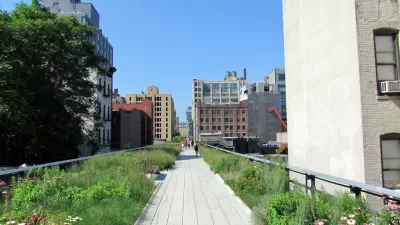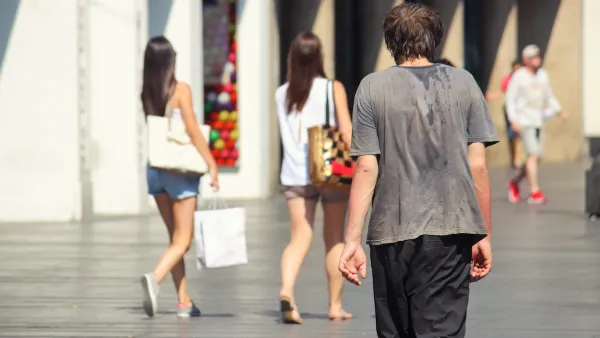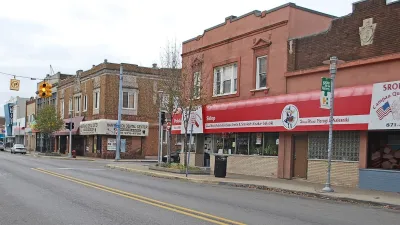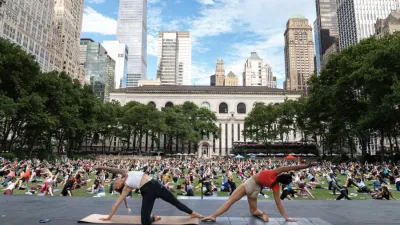New research shows that people are likely to walk more in places that are both walkable and green.

A new study from North Carolina State University reveals that people who spend time in walkable, green neighborhoods engage in more physical exercise. As reported by Megan Skrip for NC State University News, “The analysis, led by former NC State postdoctoral scholar Oriol Marquet, used wearable sensors and satellite data to link people’s activity levels with the walkability and greenness of where they spent their time.” While unsurprising, these findings indicate that coordinated improvements to pedestrian infrastructure and green spaces can improve public health. According to study co-author Aaron Hipp, “It’s unfortunately rare to live or work in a neighborhood that has the walking infrastructure like sidewalks, destinations like a spot for lunch, and are green and shaded. This work again supports that the best environments have all three.”
“The new findings suggest that having opportunities to walk between home, work and other destinations is likely to boost physical activity, as long as those areas are also very green.” The study’s authors recommend “interventions to plant vegetation should focus on doing so in areas where walkability is high to maximize opportunities for physical activity.”
Other research similarly suggests that, while hard infrastructure like sidewalks are an important factor in walkability, other elements—such as air quality, shade, and access to essential services—all contribute to a neighborhood’s walkability and the health of its residents.
FULL STORY: Study: People Are Most Physically Active When Their Environments are Both Highly Walkable and Very Green

Maui's Vacation Rental Debate Turns Ugly
Verbal attacks, misinformation campaigns and fistfights plague a high-stakes debate to convert thousands of vacation rentals into long-term housing.

Planetizen Federal Action Tracker
A weekly monitor of how Trump’s orders and actions are impacting planners and planning in America.

San Francisco Suspends Traffic Calming Amidst Record Deaths
Citing “a challenging fiscal landscape,” the city will cease the program on the heels of 42 traffic deaths, including 24 pedestrians.

Defunct Pittsburgh Power Plant to Become Residential Tower
A decommissioned steam heat plant will be redeveloped into almost 100 affordable housing units.

Trump Prompts Restructuring of Transportation Research Board in “Unprecedented Overreach”
The TRB has eliminated more than half of its committees including those focused on climate, equity, and cities.

Amtrak Rolls Out New Orleans to Alabama “Mardi Gras” Train
The new service will operate morning and evening departures between Mobile and New Orleans.
Urban Design for Planners 1: Software Tools
This six-course series explores essential urban design concepts using open source software and equips planners with the tools they need to participate fully in the urban design process.
Planning for Universal Design
Learn the tools for implementing Universal Design in planning regulations.
Heyer Gruel & Associates PA
JM Goldson LLC
Custer County Colorado
City of Camden Redevelopment Agency
City of Astoria
Transportation Research & Education Center (TREC) at Portland State University
Jefferson Parish Government
Camden Redevelopment Agency
City of Claremont





























